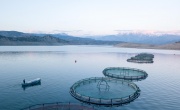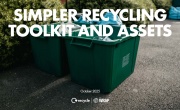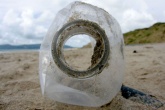Marine plastic Ocean Cleanup project eyes final deployment after $21m funding
Marine litter project The Ocean Cleanup has announced it has raised $21.7 million (£16.8 million) in donations since November 2016, allowing it to move forward with large-scale trialling of its marine plastic clean-up technology in the Pacific Ocean later this year.

Using this funding, Ocean Cleanup will be able to proceed with the deployment later this year of its passive plastic capturing technology, which uses ocean currents to catch and concentrate plastic before it is then collected, to tackle the Great Pacific Garbage Patch – one of the largest concentrations of marine plastic in the world.
Slat, Founder and CEO of The Ocean Cleanup, stated: “Our mission is to rid the world’s oceans of plastic, and this support is a major leap forward towards achieving this goal. Thanks to the generous support of these funders, the day we’ll be returning that first batch of plastic to shore is now in sight.”
Another step forward
Estimates suggest that around 12.2 million tonnes of plastic enters the marine environment every year causing great harm to the ecosystems it supports. Much of these ocean plastics are concentrated in the North Pacific gyre, colloquially known as the Great Pacific Garbage Patch, which is thought to contain 140,000 tonnes of plastic – one third of all ocean plastic. It is here that The Ocean Cleanup hopes to roll out its first experimental clean-up system later this year.
The system pioneered by The Ocean Cleanup is based on deploying the barriers to act as an artificial coastline and passively catch and collect ocean debris. The ‘V’-shaped barrier comprises buoyancy elements with weighted ‘skirts’ – thin, impermeable and flexible sheets that direct the plastics – hanging to a depth of two to three metres. These will concentrate the plastic towards a central platform where ships will pick up the plastic for recycling.
Earlier feasibility studies have indicated that 80 per cent of the plastic that encounters the booms will be captured, while most of the ocean current will pass underneath the structure, carrying away sea life and preventing by-catch.
 A prototype of the barrier has already been deployed in the North Sea
A prototype of the barrier has already been deployed in the North Sea

Trials and testing
To date, several tests and reconnaissance expeditions have been carried out to refine the system and ascertain the true scale of its task.
In August 2015, The Ocean Cleanup sent a fleet of around 30 vessels across the Great Pacific Garbage Patch, in an attempt to measure debris and quantify the true level of plastic in the area. The findings from this expedition were supplemented by findings from an aerial expedition in October 2016. The organisation suggests that these expeditions have shown that the amount of plastic in the sea has been ‘heavily underestimated’.
In June 2016, a 100 metre-long prototype of the oceanic barrier was deployed in the North Sea, 23 kilometres off the coast of the Netherlands, to test the resilience of the floating barriers to extreme weather conditions.
 The Ocean Cleanup has carried out expeditions to test the vertical distribution of plastic waste
Photo: The Ocean Cleanup
A lingering doubt
The Ocean Cleanup has carried out expeditions to test the vertical distribution of plastic waste
Photo: The Ocean Cleanup
A lingering doubt

Despite the hopes behind The Ocean Cleanup’s project, doubts remain over its effectiveness. Founder Boyan Slat asserts that the majority of marine plastic collects on the surface of the ocean, with a study published by the project in Nature Scientific Reports concluding that the majority of microplastics are found within five metres of the sea’s surface. ‘Larger sized plastic pollution’, the organisations says, ‘which by mass represents most of the plastic in the ocean, is more buoyant and stays even closer to the sea surface.’
On the contrary, environmental consultants Eunomia Research and Consulting say that barely one per cent of marine plastics are to be found floating at or near the ocean’s surface, with an average of less than one kilogramme found in each square kilometre of ocean.
Though this concentration increases at certain mid-ocean locations, with the highest concentration recorded in the North Pacific Gyre at 18kg/km2, 94 per cent of plastic that enters the ocean ends up on the sea floor. The consultancy said fighting plastic pollution on beaches would have more of an impact.
More information on the project can be found at The Ocean Cleanup’s website or in Resource’s in-depth interview with Boyan Slat.











